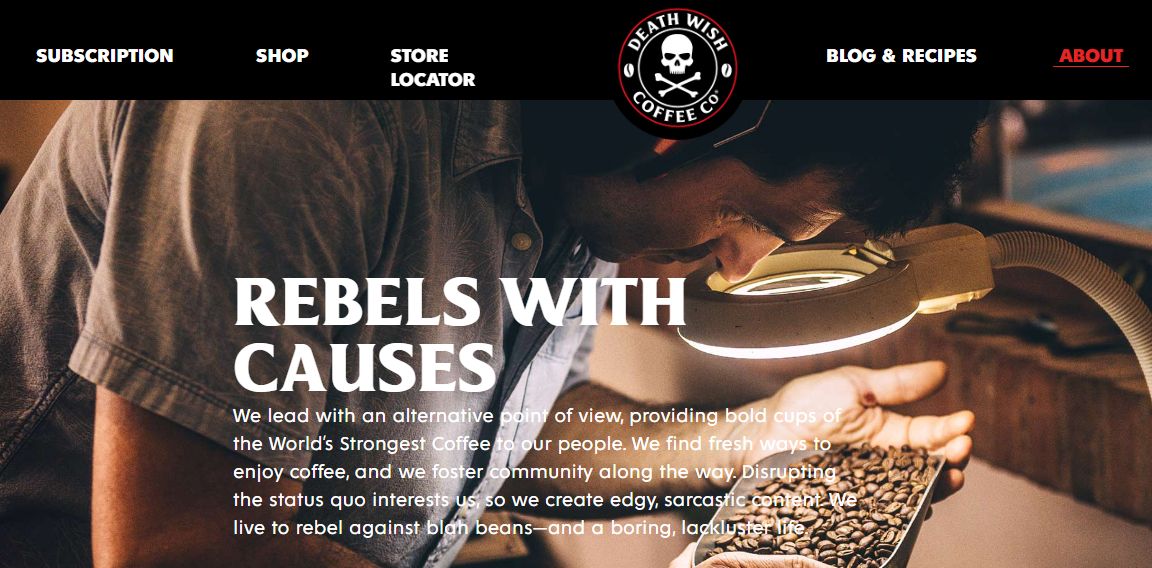Growing an ecommerce business is more than just sales. If you want your online store to succeed in a saturated ecommerce market, you need to compete for the hearts and minds of consumers.
However, with millions of ecommerce stores in the market, vying for your target audience’s attention and loyalty has become increasingly difficult.
The good news? With the right branding tactics, you can make your ecommerce brand stand out from the competition, build a reputation that keeps customers coming back, and generate referrals that exponentially grow your business.
In this guide, we explain branding and why it’s important for ecommerce businesses. We also discuss seven ecommerce branding strategies that will help you win in 2024.
Here’s what we’ll cover:
- What is branding?
- Why is branding important for ecommerce businesses?
- Ecommerce branding strategies
- Final thoughts: Ecommerce branding strategies to win brand loyalty
What is branding?
Branding is a set of strategies and tactics that help establish a unique identity — or brand — within your industry.
While this includes having your business logo and brand style guide, that’s not it. You can come across as a brand through your products, packaging, advertising, pricing, and even customer support.
Put another way, a brand is a feeling people get when interacting with your products or services. And branding is the way you create that feeling around your brand.

This branding is why rabid Apple fans are willing to line up overnight for the newest iPhone and why marketers instantly think of Mailchimp when they want to use an email marketing automation tool.
Why is branding important for ecommerce businesses?
The ecommerce world is a crowded place. As of 2022, there are over 9.1 million online retailers worldwide.
How do you cut through the noise and get more market share in your niche?
If your only game plan is to sell high-quality products and set competitive prices, you’ll fail. Why? Because that’s what every ecommerce store is trying to do.
According to the 2022 Yotpo survey about brand loyalty, today’s consumers not only want exceptional experiences and a sense of trust from brands but also need to feel valued every time they shop.
In other words, if you want to attract your target audience’s attention and improve your conversion rates, your ecommerce brand has to be more than a storefront.
You need to infuse branding into your digital marketing campaigns. That means telling your brand story to connect with customers, making them feel good about themselves and their purchases, and building a life-long relationship with every buyer.
Ecommerce branding strategies
- Know your target audience.
- State your brand mission.
- Establish your vision.
- Define your brand values.
- Use brand positioning as an ecommerce marketing strategy.
- Be authentic.
- Strengthen your brand with a solid website.
1. Know your target audience
If you want your target audience to form an emotional connection with your brand, get to know them and speak to them on a practical and emotional level.
This way, you can craft your branding strategies according to the audience — who they are, what they like, and what they want to achieve.
Ask yourself the following questions: Who is my ideal customer? Why would they buy from me? How can I reach them? What are their pain points?
For instance, Tesla has several things going for it. While some loyal customers turn to Tesla to look cool, many buyers go with Tesla to do their part in saving the environment.
And here’s a tweet from Elon Musk speaking to that target audience.

Here are effective ways to get to know your target audience:
- Use buyer personas: A buyer persona helps you humanize your audience, making it easy for you to offer user experiences and new products that matter to them. It’s important because it informs everything else you do.
- Conduct surveys: You can learn many things from your audience by asking them. Use both quantitative and qualitative surveys.
- Leverage analytics: How users interact with your brand can reveal key insights about what they like, what they don’t like, and how they want to be served. You can get started by connecting Google Analytics to your WordPress website.
2. State your brand mission
Customers don’t just buy products because they need them. They purchase them because of how they make them feel.
If you want to win your target audience’s loyalty, give them a clear brand purpose they can get behind.
Prepare a brand statement explaining what your company stands for, why it exists, and how it’ll make the world a better place. Make it brief but clear.
Here are some good examples of a brand mission statement:
- Tesla — To accelerate the world’s transition to sustainable energy.
- Asana — To help humanity thrive by enabling all teams to work together effortlessly.
- Nordstrom — To give customers the most compelling shopping experience possible.
Once you’ve written your brand mission statement, share it with your target audience via your website, social media profiles, and email signature (for internal and external email communication).
3. Establish your vision
As your business grows, your relationship with the customers evolves as well. And you can use your vision to come across as a brand the buyers want to remain connected with.
To come up with a brand vision, your target audience can get behind, ask yourself the following:
- What do you want your business to achieve besides generating revenue?
- What change do you want to see in the world?
Here are some examples of brand vision statements for inspiration:
- British Airways — One Destination: To be the world’s most responsible airline.
- Nordstrom — To serve our customers better, to always be relevant in their lives, and to form lifelong relationships.
- Amazon — Amazon strives to be Earth’s most customer-centric company, Earth’s best employer, and Earth’s safest place to work.
4. Define your brand values
If you want to build a brand your target audience will love, define your core brand values, and embody them in everything you do as a company.
In fact, brand loyalty and shared values go hand in hand. Yotpo shares that 84% of customers are more inclined to buy from brands that share their values.
For your brand values to influence buyers, ensure they’re more than words on a website or bulletin board.
Starbucks didn’t become a $90 billion business by only talking about its culture of inclusivity and human-centered approach. They did so by integrating those values into their brand strategy. Customers kept coming back because they got more than just coffee.

You can reinforce your brand values by:
- Incorporating them into company processes (including hiring, sales, and performance reviews)
- Teaching those values through orientation and training
- Articulating them in all communication (both internal and external)
5. Use brand positioning as an ecommerce marketing strategy
If you want your brand to stand out, see where your brand fits in the market. That way, you can think of a “hook” to attract potential customers — the one thing that gets them interested in buying from you over all others.
To determine what sets your brand apart from the competitors, you can use Beloved Brands’s author Graham Robertson’s brand positioning process diagram:

As seen from the image, you can find your winning zone by identifying:
- What your audience wants.
- What your brand does best.
- What makes you unique from competitors.
Once you’ve secured your “winning space,” you can double down on what makes your brand different by crafting a unique selling proposition (USP). A USP is a feature or benefit that sets your business apart from the competition.
A compelling USP should communicate what your audience cares about, highlight what your brand stands out for, and showcase your brand personality.
Here are good examples of USPs to help spark some ideas:
- Voodoo Doughnut — Donuts so wacky, the wait is part of the experience.
- Nerd Fitness — We help nerds, misfits, and mutants lose weight, get strong, and get healthy permanently!
- Death Wish Coffee — We live to rebel against blah beans — and a boring lackluster life.

For your USP to shape your brand, create marketing materials that support it. Ensure it’s communicated in every touchpoint, from social media platforms and content marketing channels to product pages and landing pages.
6. Be authentic
Customers are tired of manipulative marketing. If you want customer loyalty, you have to be real.
In fact, the 2022 Sitecore report on brand authenticity shows that customers want brands to be authentic when interacting with them. It also reports that 84% of consumers believe brands need to prove they’re acting fairly.
To become an authentic brand, back up your words with actions. If you care about the environment, show that by supporting and investing in green initiatives.
Does your brand value inclusivity? Then take specific steps to foster inclusive behaviors in the workplace.
For example, Patagonia walks its talk by carrying out environment-friendly activities like using green raw materials, investing in renewable energy, and publicly publishing its sustainable supply chain.

How do you become an authentic brand? Here are some tips:
- Be human: Authenticity starts with being human. What do you believe in? What motivates you? If what you’re doing isn’t rooted in something real, consumers will see through the lie and go somewhere else.
- Be transparent: Admit when you make mistakes or don’t know something. If a prospect or customer asks you a question, don’t make things up just because it sounds better than the truth.
- Build a relationship with your audience: Relationship building is a cornerstone of any authentic brand. Engage your audience in ways that make your brand memorable and win their loyalty.
7. Strengthen your brand with a solid website
You can grow your brand awareness and attract more loyal customers by creating a unique business website that reflects your brand values.
Here are some tips for setting up a website that establishes your brand:
- Showcase your values: Communicate what you stand for by sharing your core values on your website via your homepage and about page. And don’t stop there. Ensure every element of your website, from the hero image to the font you use, represents and embodies your brand values.
- Publish content that connects with your audience: Give your customers a reason to keep visiting your website by publishing content that resonates with them. Great content amplifies your brand voice and helps you reach more customers if you opt for search engine optimization (SEO) to drive traffic.
- Offer high-value experiences: How customers feel about your brand is tied to their interactions and transactions with your company. By setting up a website with fast loading times, easy navigation, and a seamless checkout process, you can deliver an ecommerce customer experience that keeps them coming back.
Creating an ecommerce website can be complex and overwhelming. Using a website builder like Nexcess StoreBuilder, you can set up an ecommerce store quickly and easily — without knowing a single line of code.
Final thoughts: Ecommerce branding strategies to win brand loyalty
At the end of the day, creating an ecommerce brand that your customers will love and become obsessed with boils down to:
- Getting clear with your brand purpose.
- Understanding your target audience.
- Figuring out how to best serve the buyers.
The concept of branding can be confusing. But if you implement the ecommerce branding strategies discussed in this guide, you’ll already be two steps ahead of the competition.
Sign up for Nexcess managed hosting for WooCommerce, WordPress, or Magento today to create an ecommerce site that helps you grow your customer base and further supports your branding efforts.

